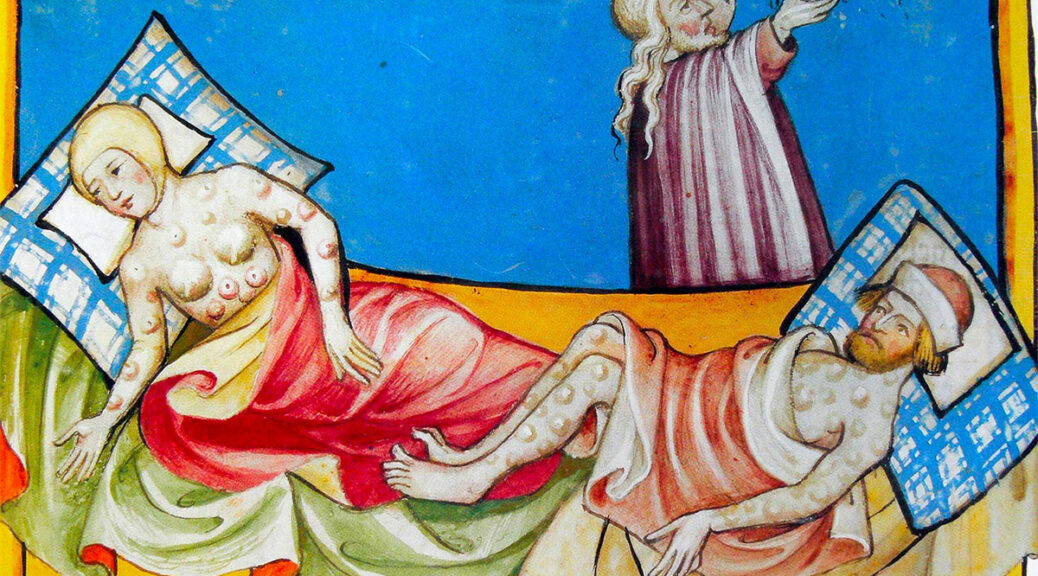How The Black Death (Sort Of) Killed A Viking Colony And Transformed Europe
Throughout much of the European Middle Ages, the Norse were compulsive travelers.
These groups of people (who we often call “Vikings”) traded, raided and pillaged throughout Europe, settled in Constantinople and fought with and against the Byzantines, encountered Arab traders from Baghdad in modern Russia, and even settled for a short time in North America several hundred years before Columbus.
Recently, new scholarly research has turned up an unexpected reason one of those colonies may have disappeared – a declining demand for walrus ivory.
Most likely, Vikings had begun settling in southern Greenland by the end of the 10th century. The settlements grew over time but never got too big – topping out at a population of around 6,000 people at the most.
The settlement was, however, large enough to merit its own bishop and one was duly established in 1126 CE. The settlements persisted into the 15th century but had disappeared by the late 16th.
Although not quite the same mystery as the lost colony of Roanoke, scholars have never been sure about why those Greenland settlements vanished.
A new scholarly paper, however, thinks it has the answer: walrus ivory. Specifically, the Greenland settlements built their economy around the trade in walrus tusks (ivory) and supplied maybe up to 80% of the ivory items for most of Europe between the 12th-15th centuries.
The trade made the colonies prosper through the 12th and 13th centuries as demand rose among the growing nobility throughout Europe for luxury items. Lavish combs, cases for mirrors, covers for books, etc. were used as status symbols and art objects in their own right.
But things changed rather dramatically during the 14th century. This was a century of calamities, beginning with repeated famines in the early part of the century and then culminating with the ongoing impact of the so-called Black Death beginning ca. 1347 CE.
By the end of the 14th century, up to 50 million people – 60% of Europe’s population – was dead. So, with these catastrophic population losses, demand began to dry up as well. The residents of these colonies on Greenland either slowly died off or simply left.
So, what does this all mean?
First, if the scholars are right about much of Europe’s ivory coming from walruses, we need to think differently about trade throughout the European Middle Ages.
Many medieval ivories were thought to have come from elephants, traveling into Europe via the Islamic world in North Africa or the Middle East.
What the recent article suggests, however, is that elephant ivory was a particularly rare and valuable commodity. Walrus tusks allowed the more middling nobility access to these luxury goods.
Second, the disappearance of the settlements might be further proof of just how transformative the Black Death really was for Europe.
In a book published after his death in 1991, Prof. David Herlihy suggested in broad outlines the tremendous long-term cultural and intellectual changes brought about by the Black Death. Much of his conclusions have been challenged in recent years but Herlihy’s genius was putting his finger on just how the massive scale of death changed the way people thought about themselves and their relationship to the world.
Established authorities were questioned since they had no good answers to ending the plague. Social class was upended as economic and cultural communities struggled to replenish their ranks. If the settlement in Greenland left the island uninhabited for a century or more, this would support Herlihy’s thesis about long-term change.
In other words, the findings of this research both challenges and confirms what medievalists have thought about their period for some time.

In other words, as I’ve mentioned elsewhere, the research being done on the Middle Ages is exciting precisely because it oftentimes both confirms how much we already know about the period, while paradoxically reminding us of how much about the past there still is to discover.
